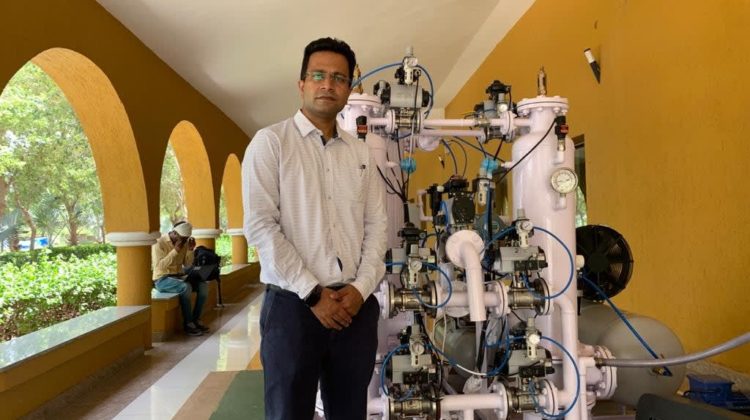
Researchers from three universities in two different countries have collaborated to develop a low-cost ‘cookie-cutter’ portable oxygen conversion unit in response to critical shortages of the gas in Indian hospitals overwhelmed by Covid-19 cases. The portable, easy-to-assemble unit can be made almost entirely from materials available in Indian hardware stores and runs off a diesel generator.
Paul Webley, professor of chemical engineering at Monash University in Melbourne, Tejas Bhatalia, a senior research fellow at Curtin University in Perth and Abishek Sharma, professor of chemical engineering at Manipul University in Jaipur, India, worked via video link to develop the device. Sharma gathers data from the main large prototype, which he then sends to Webley, who uses simulation tools to help diagnose operations, interpret the data and suggest changes. Meanwhile, Bhatalia uses a smaller prototype to attempt to debug the large unit.
The unit is designed to strip nitrogen from the air, leaving the oxygen gas behind. ‘We’re currently in the process of ensuring the oxygen purity is sufficient,’ Sharma said. ‘We’re currently getting about 70 per cent purity and our aim is to get this up to 90 per cent. The team and I are working on changes to make this happen and are confident we’ll be able to do so soon.’
‘Our plan is to use readily available equipment items – vessels, compressors, valves, piping,’ said Webley, who formerly worked as an engineer on designs for oxygen plants at a US industrial gas company. ‘Our emphasis has been on simplicity and low cost, not performance.’ At present, the system requires a silicon molecular sieve to filter out nitrogen. Although the sieve is specialised, it’s inexpensive and relatively easy to buy.
‘My main goal was to help Indian engineers do this themselves,’ Webley said. ‘Can I teach them how to do this so that they can duplicate them and make thousands and become completely self- sufficient?
‘An important lesson to learn is that a good, quick, low-cost design is better than a perfect, optimised design,’ he continued. ‘Saving lives is paramount and can’t wait for us while we perfect our work.’ According to Webley, the team believes that it will achieve a rapidly reproducible ‘cookie-cutter’ unit after three or four more iterations of the design. They’ve been in contact with a number of Indian hospitals to set up a test site for the unit. If it meets the hospital’s specifications and standards, the researchers will develop more units.



